Eyelid ptosis refers to the condition in which the upper eyelids are lower than they should be. Ptosis surgery is performed to elevate the affected eyelid or eyelids. I frequently see patients who have had previous ptosis surgery and are frustrated by the need for another procedure. The underlying cause of eyelid ptosis, as well as age and other factors, all have an impact on the long-term success of ptosis surgery. I’ll talk about how I advise patients who come to me for ptosis evaluation.
Eyelid ptosis correction surgery is almost entirely performed by oculoplastic or oculofacial plastic surgeons because it is a specialized surgery focused on during Fellowship-training for surgeons who have completed an ophthalmology residency.
Ptosis Correction Before and After
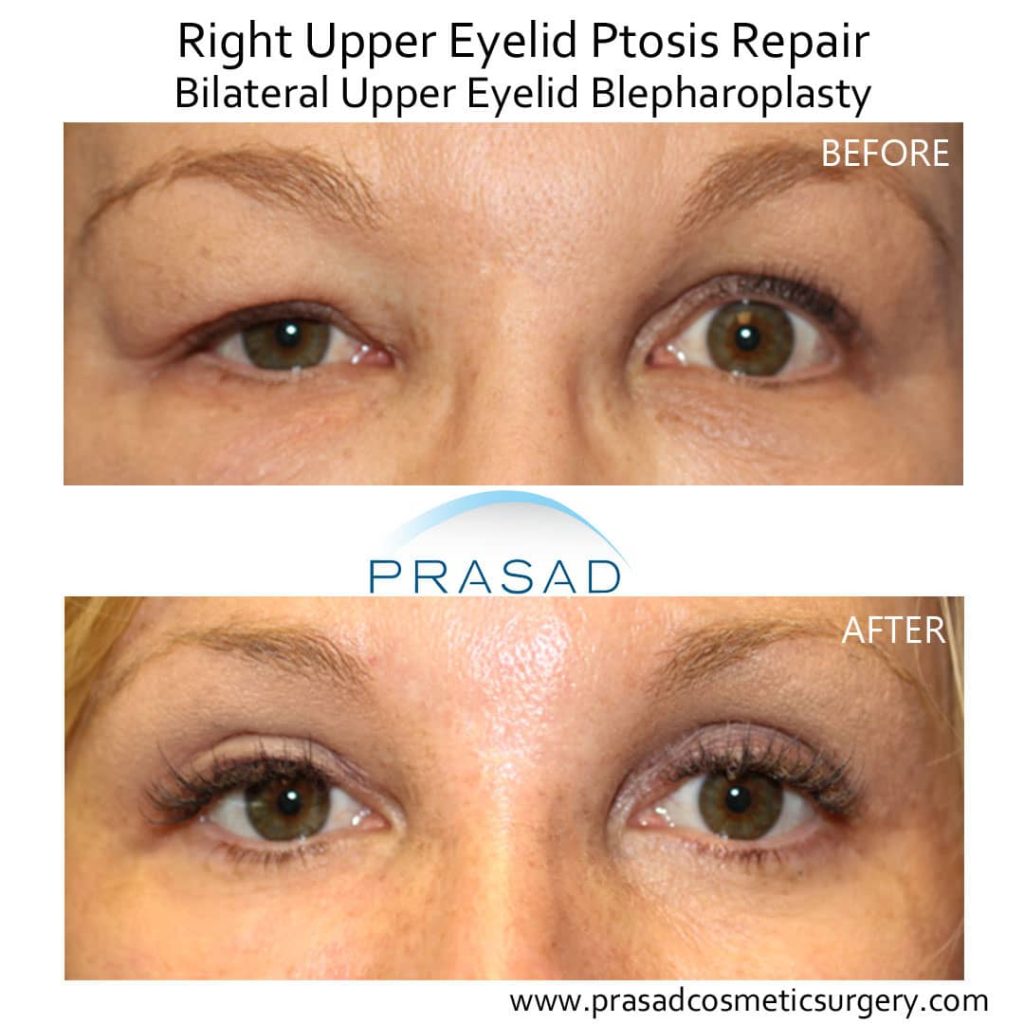
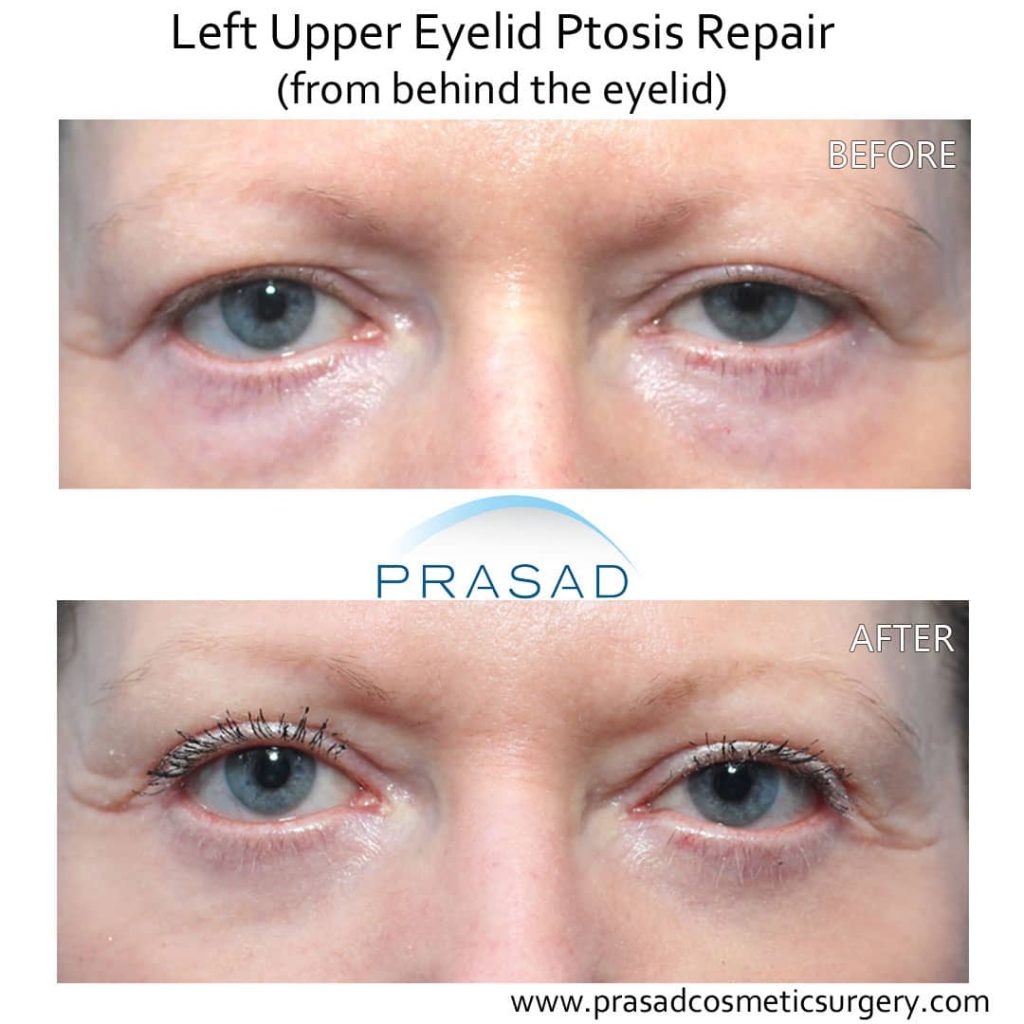
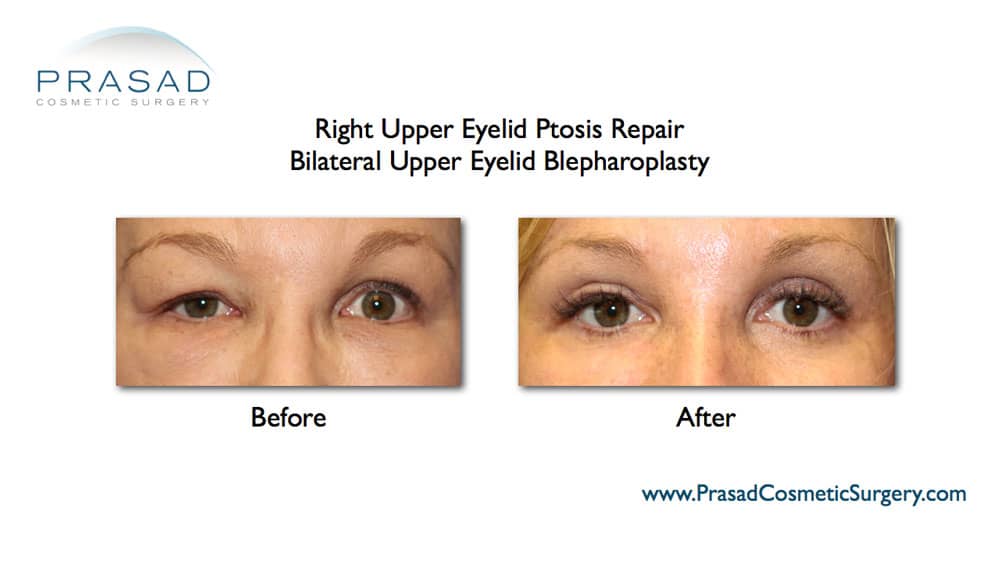
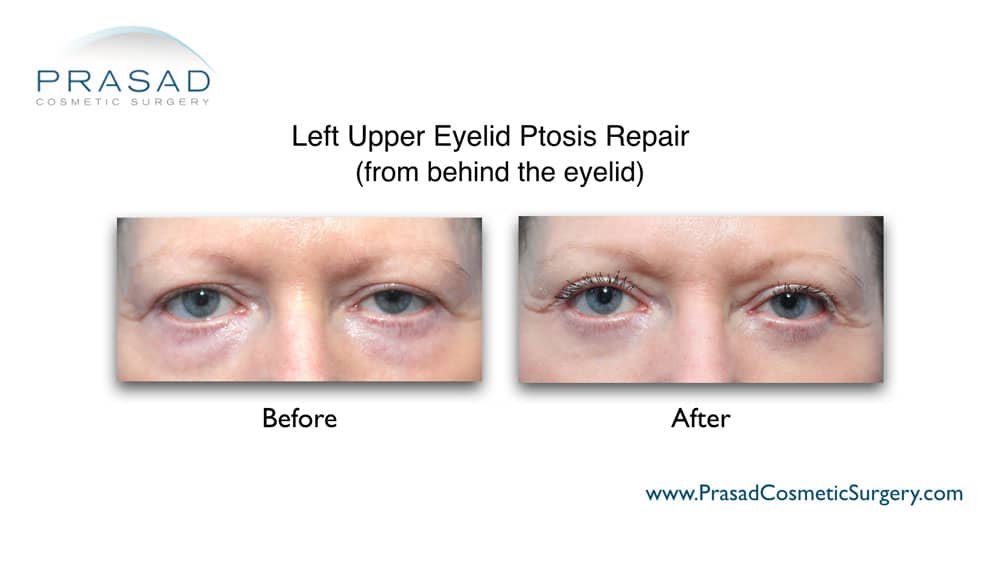
View more ptosis surgery before and after photos
People who come in for ptosis surgery, like anyone else, want the procedure to be done once and be done for the rest of their lives. As previously stated, the underlying cause of eyelid ptosis, as well as other factors, influence the predictability and longevity of any ptosis procedure.
Types of Eyelid Ptosis
Eyelid ptosis can be congenital (meaning you were born with the condition) or acquired (meaning the ptosis developed after birth). The type of ptosis surgery performed is determined by the position of the eyelids, and the function of the levator muscle which lifts the eyelid.
Congenital ptosis indicates that the levator muscle did not fully develop. The muscle may not contract as strongly as normal, nor will it relax or stretch as much as an unaffected eyelid. Assume you can’t fully extend your arm because your bicep can’t fully relax, nor can you fully flex your arm because your bicep muscle is underdeveloped.

Ptosis Surgery Types
Ptosis correction aims to lift the upper eyelid to a height and contour that improves appearance and vision, while still allowing the eyelid to close properly for proper eye protection and lubrication. Understanding the underlying issue with congenital ptosis is what makes congenital ptosis management difficult.
Levator Muscle Resection
A levator muscle resection is a procedure for congenital ptosis. The levator muscle is shortened in this procedure so that the eyelid can be elevated. However, because the levator muscle does not relax or stretch normally, the eye may not close as well after surgery. This means that while a patient may appear normal during and immediately after surgery, the eyelid may drift lower as the tissue stretches to allow for eye protection with normal or forced blinking.
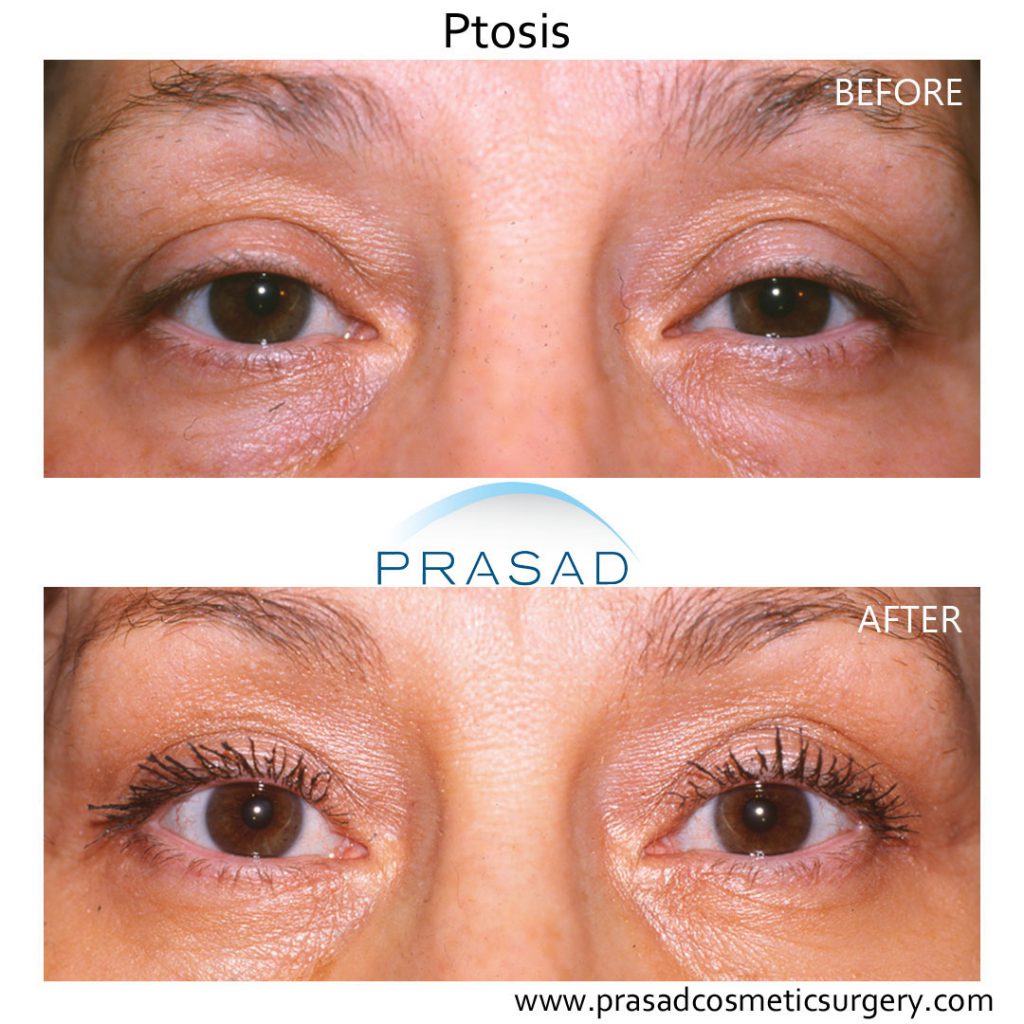

Frontalis Sling
“Frontalis sling” is another procedure for congenital ptosis. The frontalis muscle, which lifts the brows, is connected to the eyelid margin in this procedure, allowing your eyes to open by lifting your brows. This procedure is used when a patient has moderate to severe ptosis with little to no levator muscle function. In this case, the tissue can stretch with blinking, and changes occur over time with facial aging, necessitating additional surgery in the future.

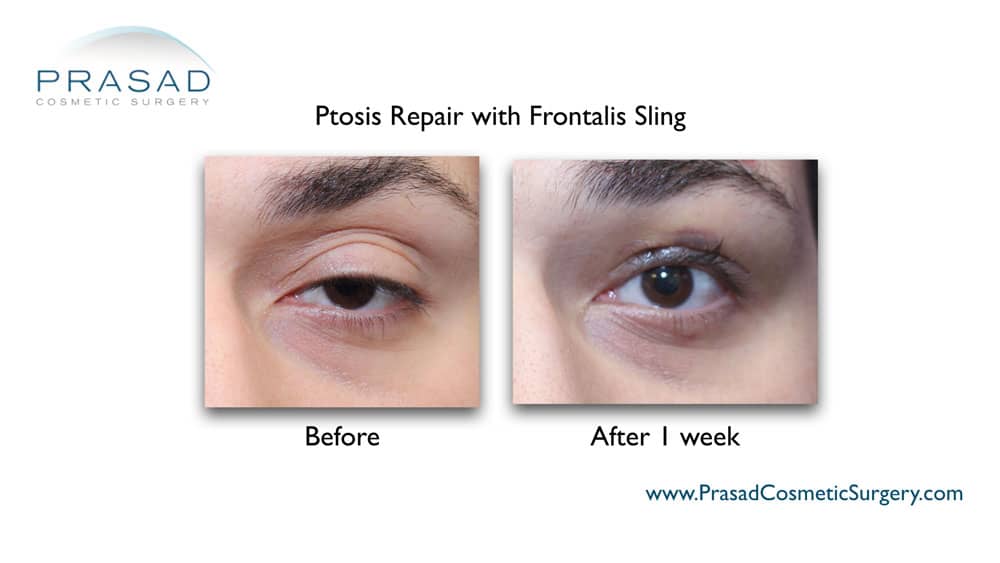
Although there are neurologic causes for ptosis, the most common cause is involutional ptosis, which is essentially the levator muscle tendon called the levator aponeurosis becoming thinner or detaching from the tarsus structure.
Address Slight Ptosis Cases – Mueller’s Muscle/ Muellerectomy
People with involutional ptosis generally have good muscle function, and correction can be done successfully with long-term stability. I routinely perform ptosis surgery from behind the upper eyelid. I’m able to get consistent good results for people with mild to moderate ptosis and good levator muscle function by using a muscle called “Mueller’s muscle” behind the levator muscle, in a ptosis correction surgery called a muellerectomy.
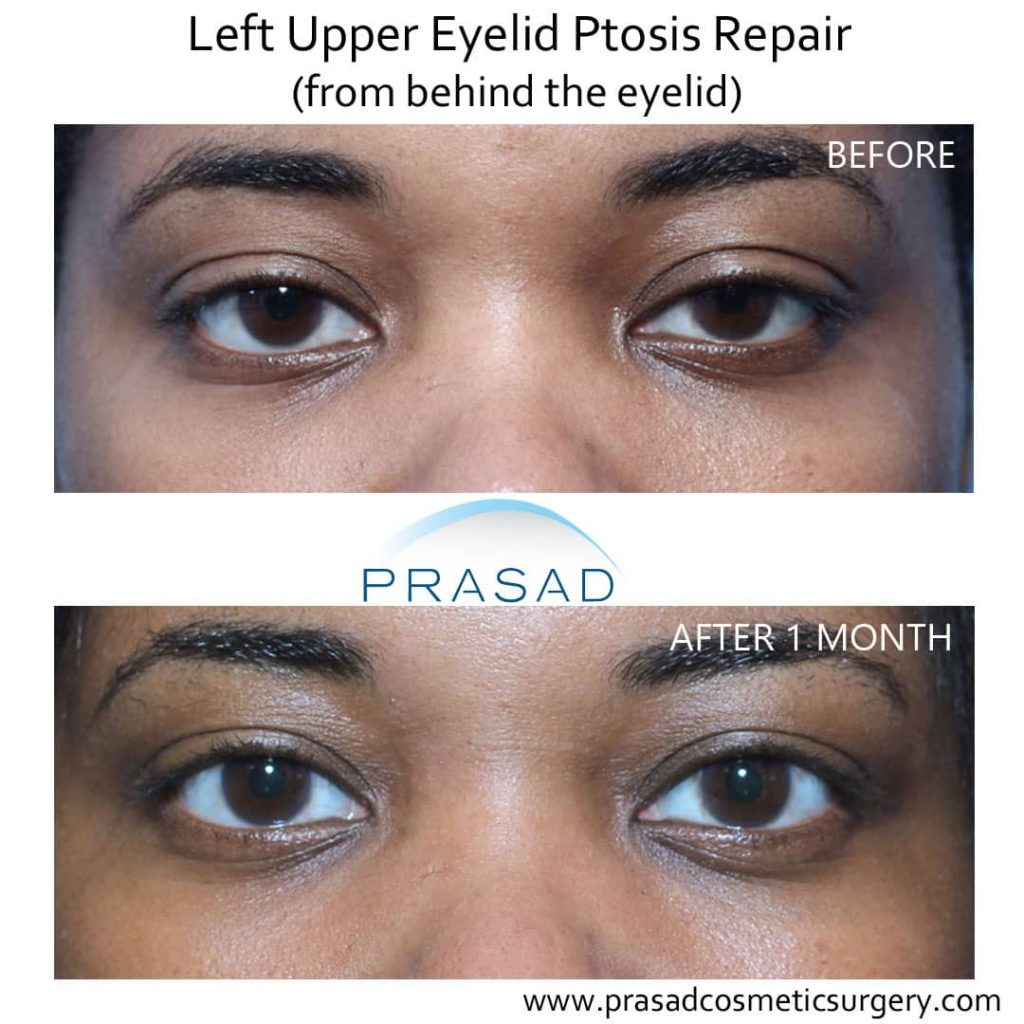
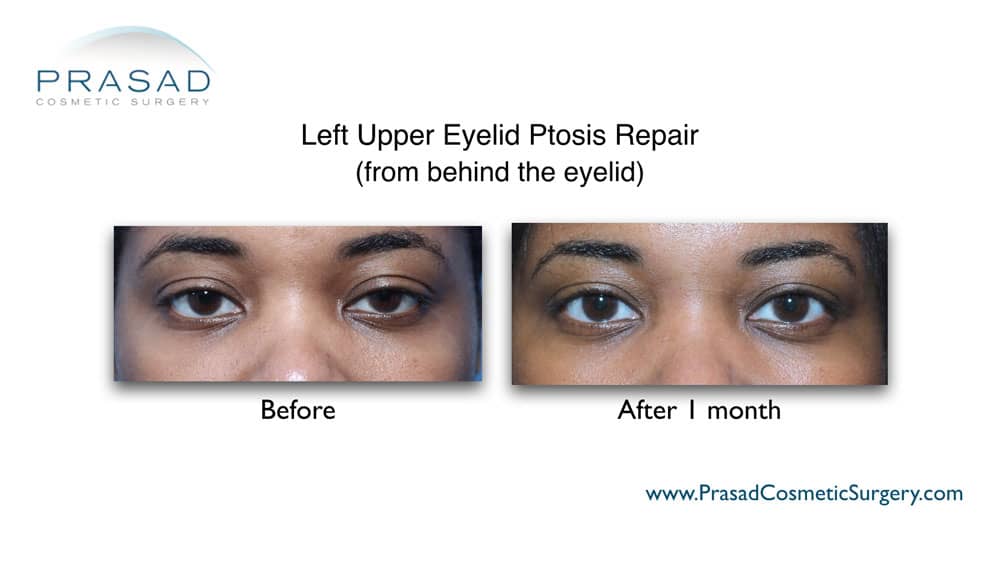
Eyelid Still Droopy After Ptosis Surgery
Even with a successfully executed procedure, revision surgery may be needed for under correction or overcorrection. I know I can speak for any experienced oculoplastic surgeons that ptosis surgery can be very challenging to achieve satisfactory results, regardless of the surgeon’s technical expertise. I would go so far as to say that it’s a reflection of an oculoplastic surgeon’s real world experience to acknowledge just how complex ptosis surgery can become. It’s no wonder that no other surgical specialty is trying to compete for these procedures.
During my consultation, I explain to my patient the variables that can affect the outcome of the proposed procedure and that there may be a need for a “plan b” during surgery as well as a need for revision after surgery, depending on the type of surgery I’m planning to perform. During surgery, I have my patients sit up so that I can make adjustments to increase the likelihood of a successful outcome.
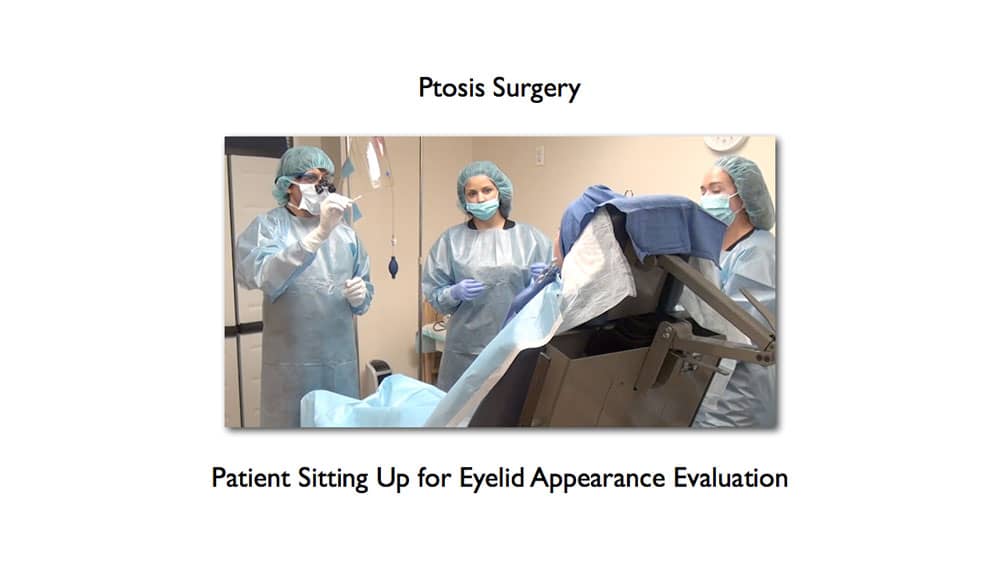
Ptosis Treatment
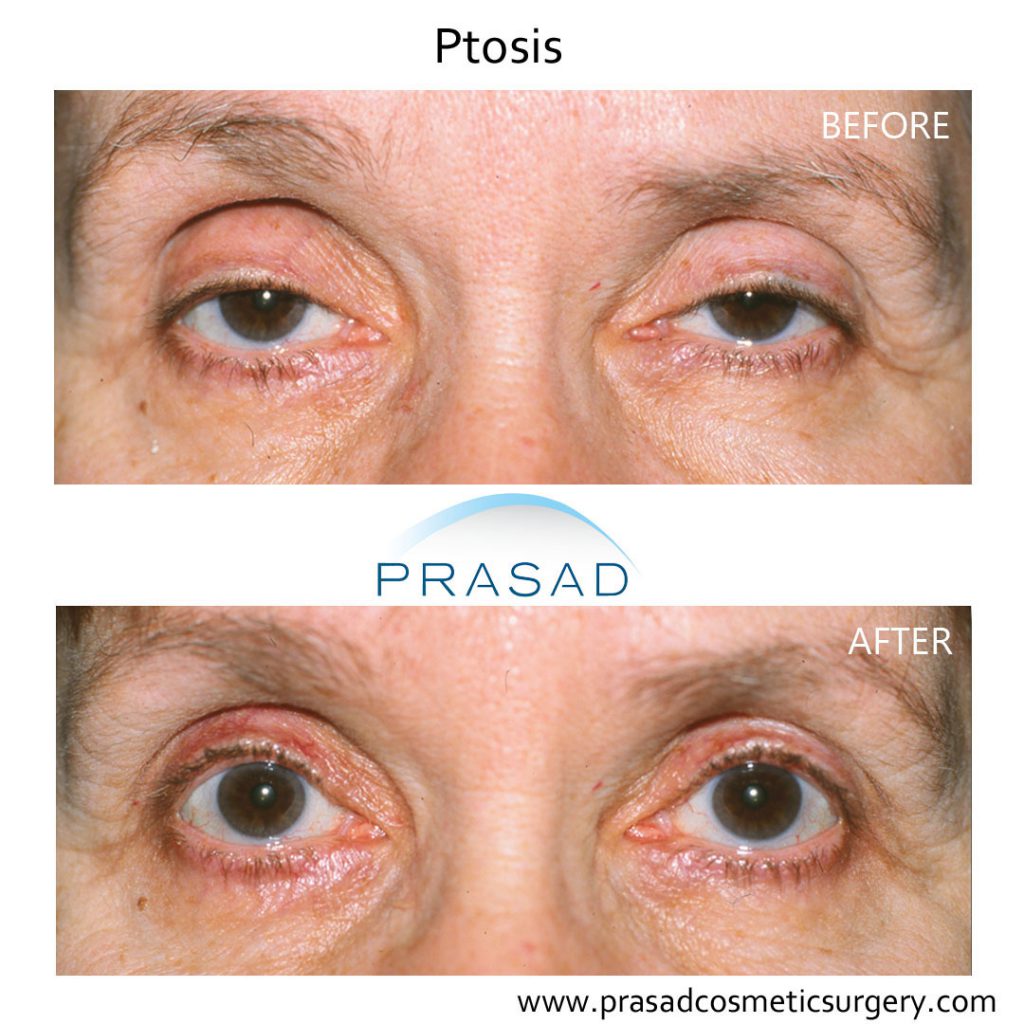
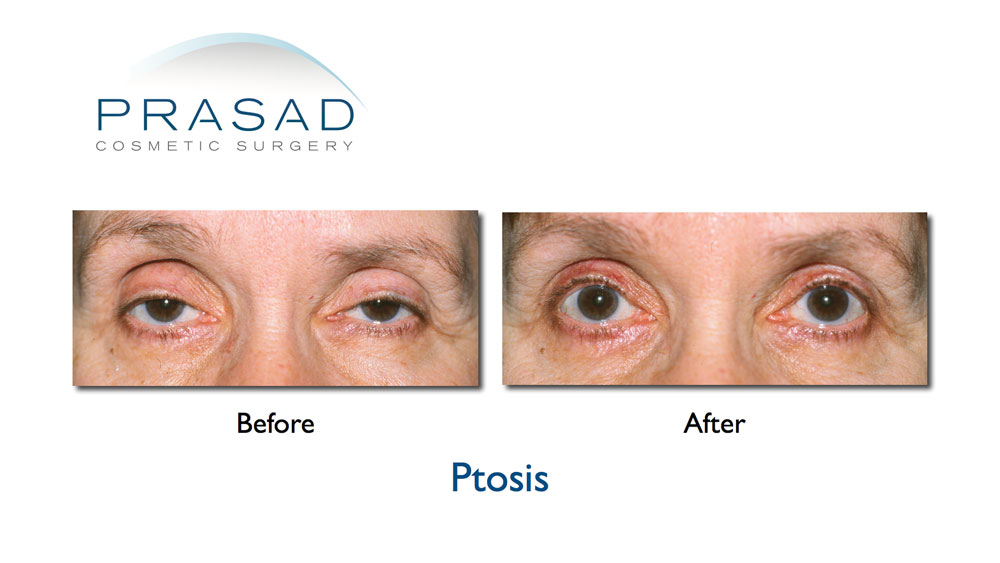
Ptosis correction surgery is routinely performed in my practice under local anesthesia with LITE IV sedation. In my experience, avoiding the risks and recovery from general anesthesia is optimal for my patients, in addition to being able to make fine adjustments with my patients sitting up. I remove skin sutures after about 5-7 days if I place them. My ptosis surgery patients typically return to work within a week of surgery.
In spite of some complexity, the results of ptosis correction surgery can last for years. The predictability and need for additional procedures is one of the risks of having this type of surgery, depending on the cause of your ptosis, the strength of your levator muscle, and other eyelied-related anatomic and functional factors. It is critical that you receive a thorough examination and enough time during your consultation to fully comprehend the risks associated with your specific ptosis condition.

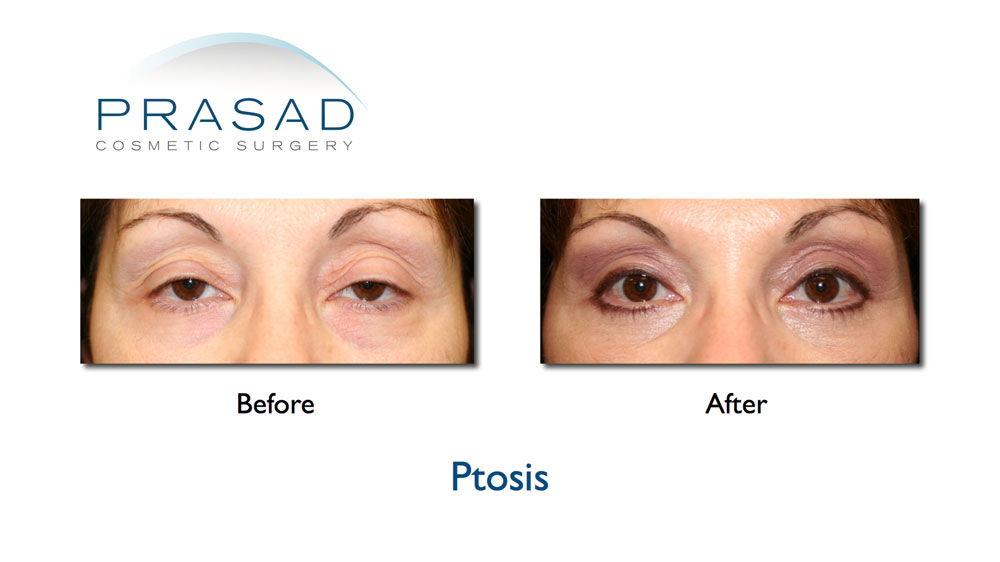
Ptosis Correction NYC and Long Island, New York
Dr Amiya Prasad is a Board-certified Cosmetic Surgeon and Fellowship-trained Oculofacial Plastic & Reconstructive Surgeon. He’s been in practice in Manhattan and Long Island for over 25 years. He performs cosmetic and reconstructive eyelid procedures every day in his practice, including surgery for under eye bags, hooded eyes, and Asian double eyelid surgery.
To schedule a consultation, fill-up the contact form below, or you may call any of our offices at (212) 265-8877 for Manhattan, New York City; (516) 742-4636 Garden City, Long Island; or (703) 356-1336 for Vienna, Virginia.

